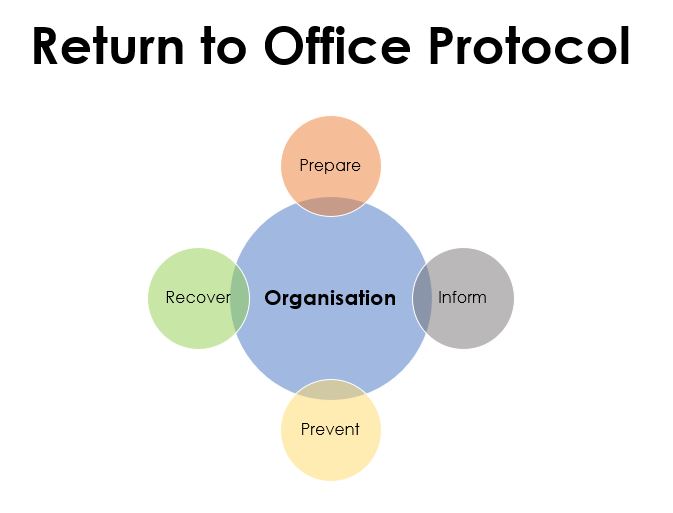Cardinus Health and Safety Director, Peter Kinselley discusses the challenges of returning to work after lockdown and what our RTW strategy looks like.
The US government has made lots of noise about reopening the economy and are looking at ways to make this feasible. Similarly, the Blair Foundation has just released its report, A sustainable exit strategy: Managing uncertainty, minimizing harm.
The Blair Foundation report provides an overview of the Government strategies from across the globe to combat the COVID-19 outbreak and provides insight into what we need to consider to reduce or remove the current lockdown arrangements.
The essence of all of this to give confidence that we can return to work but, we need to do this in a way that reduces the risk to our teams, their families, and is sustainable.
The View of Senior Leaders
In a conversation with Cardinus CEO, Andy Hawkes, I discussed our business returning to work and he commented that his biggest concern was the health and wellbeing of our staff and their families, in relation to COVID-19 and didn't want people back at work until he could guarantee this.
This will resonate with other CEOs and business leaders. We need to be able to work to sustain a business, and for many, this will require a return to the workplace. However, before going back we need to consider managing risk, uncertainty and ensure a safe and healthy environment.
Each business will need to consider how they will return to work and we should consider the following model to help us manage uncertainty and minimize harm.
Our Return to Work Strategy
Here at Cardinus, we have been working to develop a strategy to support our colleagues and clients. Our program focuses on the following protocol:

The Prepare, Inform, Prevent, Recover Approach
To assist you we have developed the following guidance using the Prepare, Inform, Prevent, Recover (PIPR) approach.
Prepare:
Get ready to return to work and identify your return to work plan. This should include the following
- Leadership team discuss and agree the business return to work program
- Plan to prepare your building for occupancy
- Arrange to conduct a preoccupancy inspection and arrange a pre-occupancy deep cleaning program
- Train your FM and cleaning teams on good hygiene matters and establish a daily cleaning schedule
- Review any service which may present a health issue and establish how you can minimize risk
- Test all emergency and life safety systems
Agree who will return to work and consider the following:
- Workplace distancing and space availability
- Work routines to achieve workplace distancing
- Vulnerable or at risk staff
- Staff who have child or care responsibilities
- Travel arrangements to, where possible, reduce the need for public transport
Establish workspace distancing protocols based on Federal or State advice. This should be considered for the following:
- Staggered arrival and departure
- Building entrance and/or exit protocols
- Workspace
- Pantries and any space where food is prepared and eaten
- Meetings internal
- Meetings with clients
- Security and Emergency arrangements
You also need to consider the consequences of increased anxiety caused by how the return to work may lead to workplace aggression and/or violence.
And importantly, establish a protocol to respond to expected spikes in the outbreak. This will ensure a quick response if you need to send your team home, you can do this effectively without disruption to service.
Inform:
Establish a return to work program and establish who will communicate with staff. The more senior the person, the better.
Arrange a welcome back to work program for staff and managers, to inform them of the 'new' workplace protocols. This includes:
- Workplace distancing protocol and building cleaning arrangements
- Travel and arrival arrangements
- This is particularly important for those who cycle to work or use changing facilities
- Relaxation of car share program, if in place
- Follow Federal or State advice on use of public transport
- Working arrangements including breaks
- Seating arrangements
- Workstation health and hygiene requirements
- Eating and drinking and use of fridges for personal food
- Ill-health reporting and staff support program
- End of day protocols, where an alternative team may be working on site
- Travel to and from client sites or meetings
- Vehicle hygiene requirements and checks
And keep reinforcing your health and hygiene messages as ultimately, they will keep people healthy and safe.
Prevent:
Ensure that health and hygiene is managed and maintained by:
- Identifying key touch points in the workplace and providing appropriate sanitation stations to allow hands to be cleaned
- Washroom cleanliness
- Determining cleaning frequencies which need to consider an initial clean of surfaces and HVAC system
- Cleaning to consider core activities and staff provided with appropriate PPE and be visible to staff during the working day
- PPE is recommended for psychological control, rather than a safety measure
- Ensuring statutory testing is undertaken safely
- Reviewing:
- Food preparation and server areas to ensure workspace distancing can be maintained
- Deliveries
- Waste Arrangements included specific arrangements for PPE worn by cleaners and FM Staff
- Cycle to work arrangements and changing facilities where provided
- Reinforcement of workplace distancing protocols
Recover:
The business recovery is a key stage. Leaders should monitor the effectiveness of the return to work program to ensure that it remains effective and is supporting those who have returned to work. It can also be used to restore confidence in the business.
Review lessons learned from the outbreak and ask for feedback. Critique what you've learned and use this to improve.
Review and update your Business Continuity Plan. Most organizations will have had their plan activated by the outbreak so we would encourage you to learn from this.
Finally, review what you've learned from the period of time people have been working from home. Are there positives to be had? We believe that lockdown has reconnected families and given people time to look at what's important to them, so it might be time to look at how teams work in a different way!
The above should bring some structure to your return to work program but, there’s lots more to consider. For help managing your return to work process, take a look at our return to work checklist which considers the below areas when planning your return to work process:
- Organization
- Overall
- Safety/Security systems
- Facilities
- Planning





